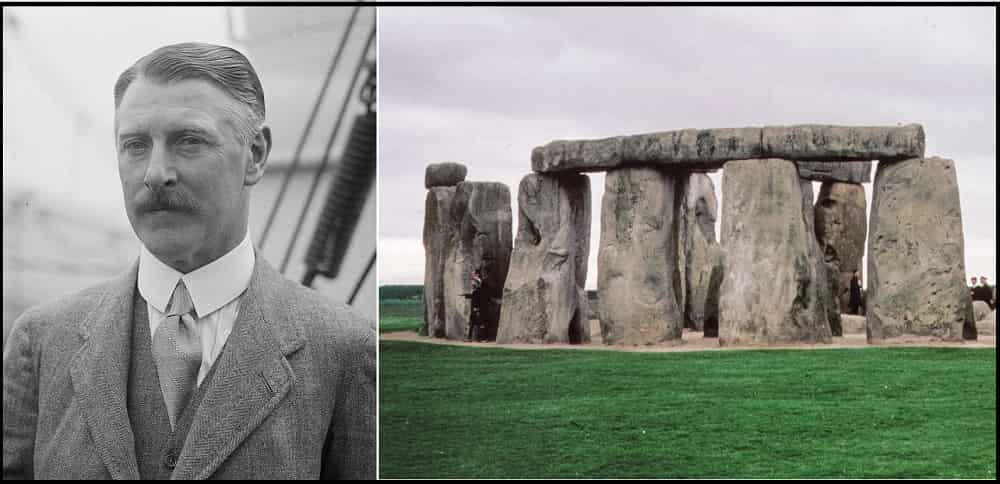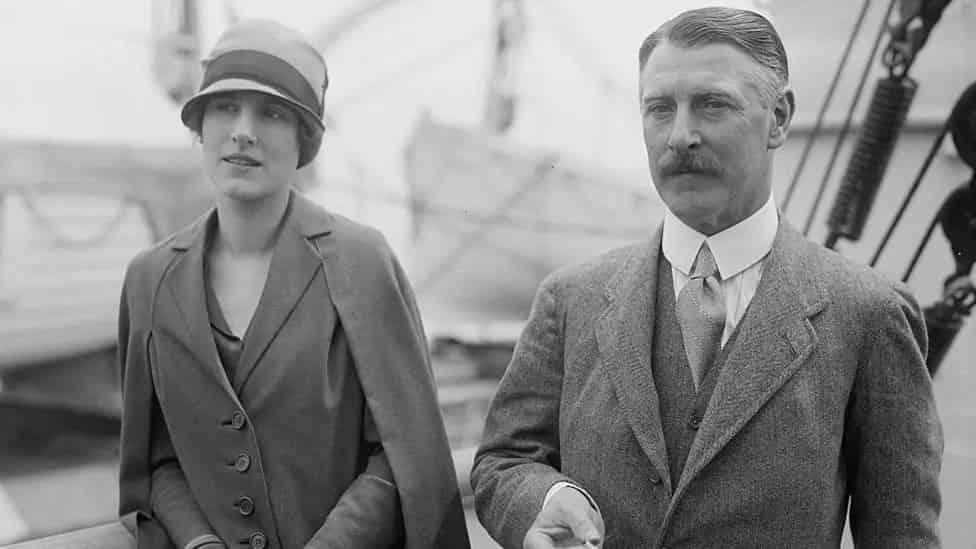The Man Who Bought Stonehenge: The Remarkable Story of Cecil Chubb

When one imagines Stonehenge, it’s easy to think of ancient civilizations and mysteries that span thousands of years. But few would guess that one of the most iconic prehistoric monuments in the world was once owned by an ordinary man, Cecil Chubb.
Born in 1876 in Shrewton, a small village near Stonehenge, Cecil Chubb was a figure whose name has become entwined with the monument’s modern history. His purchase of Stonehenge in 1915 is a tale that speaks to local pride, surprising auction buys, and a selfless act of national generosity.
Who Was Cecil Chubb?
Cecil Herbert Edward Chubb wasn’t born into aristocracy or wealth. In fact, his origins were quite humble. He was the son of a saddler but worked his way up through education. He attended Bishop Wordsworth’s School in Salisbury and later moved on to Christ’s College, Cambridge, where he studied law. Chubb established himself as a successful solicitor in the early 20th century and married Mary Finch, the daughter of a local doctor, in 1902.
Chubb’s life, up until the auction of Stonehenge, was rather ordinary—an affluent professional, respected in his local community. But on September 21, 1915, Cecil Chubb made a decision that would change both his life and the fate of the historic monument forever.
The Auction: A Monument for £6,600
On that fateful day in September 1915, Stonehenge was put up for auction at the Palace Theatre in Salisbury. The estate had been in private hands for centuries and was most recently owned by the Antrobus family. However, following the death of Sir Edmund Antrobus during World War I, the family decided to sell the property. The entire estate, including Stonehenge, was listed with a starting price of £6,000.
Cecil Chubb attended the auction, although it’s widely believed that he hadn’t gone there with the intention of buying Stonehenge. According to popular legend, his wife had asked him to purchase a set of curtains, but instead, he came home with Stonehenge—a rather unexpected substitute. Chubb himself later commented that he thought “a Salisbury man ought to buy it,” so he placed a winning bid of £6,600, securing Stonehenge as his own.

Why Did Chubb Buy Stonehenge?
While some speculate that Chubb may have had a spontaneous urge to buy Stonehenge, others suggest he had a deeper connection to the land, having grown up just a few miles away. Chubb always maintained that he bought the monument out of a sense of local pride, feeling that such a significant historical site should remain in British hands.
His purchase was met with both amazement and curiosity. In the years leading up to Chubb’s acquisition, Stonehenge had become a major tourist attraction, though it wasn’t fenced off or well-preserved as it is today. The decision to buy it reflected not just personal interest but a desire to protect and preserve it for future generations.
The Gift: Stonehenge Becomes a National Treasure
Three years after buying the ancient site, Cecil Chubb made another monumental decision. On October 26, 1918, he gifted Stonehenge to the British government. He made this donation with one condition: that the public should be able to visit Stonehenge freely, and it should be preserved for future generations.
In a letter accompanying the gift, Chubb wrote that the monument should be handed down to the nation “with the preservation of ancient monuments in view.” His act of generosity was formally accepted, and he was knighted for his services, becoming Sir Cecil Chubb.
Stonehenge as We Know It Today
Cecil Chubb’s decision to donate Stonehenge to the nation ensured that the monument would be protected and enjoyed by millions. Today, Stonehenge is a UNESCO World Heritage Site and one of the most visited landmarks in the UK, attracting nearly one million visitors each year.
While Chubb’s personal story has largely faded into history, his impact on the preservation of Stonehenge endures. Without his intervention, it’s hard to imagine what would have happened to the ancient monument. Would it have been divided into plots of land? Would it have fallen into further disrepair? Thanks to his foresight and local pride, Stonehenge remains a symbol of British heritage.
The Mystery and Charm of Cecil Chubb’s Purchase
There’s a certain charm to the idea of an ordinary man walking into an auction, expecting to purchase furniture, and instead leaving with one of the world’s greatest archaeological treasures. Cecil Chubb’s story is one of fate, impulse, and ultimately, generosity. His decision to buy and later gift Stonehenge to the British people makes him a unique figure in the monument’s long and storied history.
As we stand in awe of the ancient stones today, it’s worth remembering that Stonehenge might not have been as accessible or as well-preserved if not for a local man’s spontaneous purchase. Sir Cecil Chubb may not have been an archaeologist or historian, but his place in Stonehenge’s legacy is secured as the man who, for a brief time, owned one of the wonders of the world.
FAQ: The Story of Cecil Chubb and Stonehenge
1. How did Cecil Chubb make his money?
Cecil Chubb made his money primarily as a solicitor. He came from a modest background, being the son of a saddler, but he worked his way up through education, eventually establishing a successful law practice. His career in law, along with his investments, allowed him to become financially secure enough to make significant purchases, such as Stonehenge, at the time.
2. Did Cecil Chubb buy Stonehenge for his wife?
According to popular legend, Cecil Chubb may have originally gone to the auction intending to buy some household furniture, specifically a set of curtains, for his wife. However, instead of returning with furniture, he surprised her by purchasing Stonehenge! While there is no concrete proof that this was his sole motivation, the story adds a whimsical element to his historic purchase. What is known is that he had a sense of local pride and wanted to keep Stonehenge in British hands.
3. Who originally owned Stonehenge?
Stonehenge has had various owners over the centuries. Before Cecil Chubb’s purchase in 1915, it was owned by the Antrobus family, who held the property as part of their estate. Following the death of Sir Edmund Antrobus in World War I, the family decided to sell it. The monument had been in private hands for centuries before it was finally gifted to the British government by Chubb in 1918.
4. How much did Stonehenge sell for?
Cecil Chubb purchased Stonehenge for £6,600 at an auction in 1915. This would be the equivalent of around £500,000 to £600,000 today, taking inflation into account. Despite the relatively modest price for such a significant historical landmark, the purchase was considered a substantial investment at the time.
5. Who owns Stonehenge now?
Stonehenge is currently owned by the British government. It was gifted to the nation by Cecil Chubb in 1918. The site is managed by English Heritage, a charitable trust responsible for preserving historic sites in England. The surrounding land is owned by the National Trust, which works alongside English Heritage to ensure the preservation and accessibility of Stonehenge for future generations.
